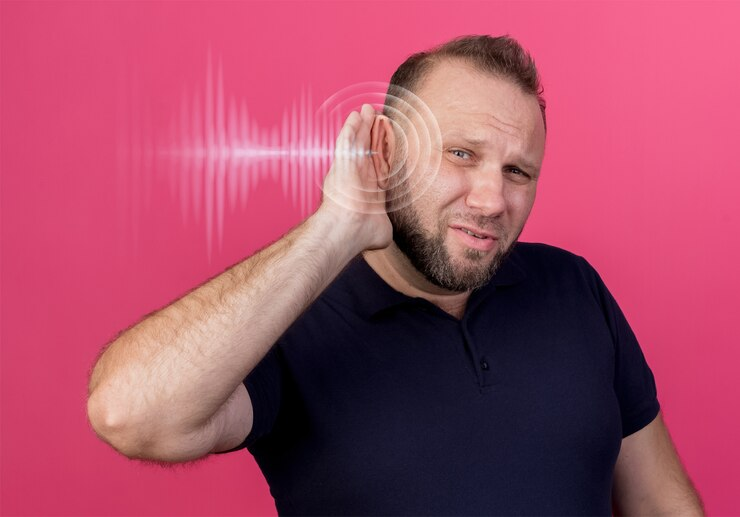
Our Blog
Pulsatile Tinnitus - Symptoms, Diagnosis, and Causes
The most common symptom of pulsatile tinnitus is the thumping or whooshing sound in one or both ears. Patients report a pulsatile aural perception synchronized with their heartbeat, which can be debilitating during the day and disrupt sleep at night.
Anyone can mistake pulsatile tinnitus for regular tinnitus, also known as non-pulsatile tinnitus.
Pulsatile tinnitus differs from the more prevalent tinnitus in terms of its rhythmic nature, indicating underlying vascular or circulatory issues. Whereas non-pulsatile tinnitus presents as a continuous sound unrelated to the heartbeat, often stemming from auditory system disturbances or hearing loss.

Statistics Canada reports that an estimated 37% of adult Canadians, around 9.2 million people, have experienced tinnitus in the past year (2019). This data doesn’t differentiate between pulsatile and regular tinnitus, but it provides a good idea of the overall prevalence of tinnitus in Canada.
In this article, we will provide a deeper understanding of pulsatile tinnitus, its symptoms, diagnosis, and causes. We will also cover treatment options, prevention, and self-management strategies to find relief.
What Is Pulsatile Tinnitus?
Pulsatile tinnitus (pulse synchronous) is a rare form of tinnitus characterized by a rhythmic, steady beat in sync with the heart. Only one ear may manifest this symptom in the absence of external sound, with noise originating from within the body.
These signs distinguished pulsatile tinnitus from standard tinnitus, which presents as a constant ringing or buzzing and ranges from faint to quite loud. Some patients report that they hear sounds similar to melodies or singing.
Depending on the root cause and severity, additional symptoms may be present and become unbearable. For instance, high blood pressure could manifest alongside the whooshing as headaches.
Pulsatile Tinnitus Symptoms
Pulsatile tinnitus patients often describe the condition as disruptive to their everyday lives, underscoring the importance of understanding its triggers for effective management. Symptoms may fluctuate in response to various factors, such as changes in posture or head movements.
For instance, when lying down or turning your head, pulsatile tinnitus symptoms may intensify or diminish. Similarly, the pressure on the jugular vein can alter the intensity or frequency of tinnitus symptoms.
These manifestations may occasionally subside without treatment, but since their root cause can be particularly dangerous, it’s essential to seek professional medical advice for an appropriate diagnosis.
Diagnosis
If you suspect pulsatile tinnitus, book an ear clinic Toronto visit to ensure a proper diagnostic process. An audiologist will begin with a comprehensive medical history, inquiring specifically about your symptoms. They may employ a hearing test to rule out alternative causes for hearing loss or impairment.
Following this assessment, your family doctor or GP may order tests to identify the root cause of the tinnitus. Imaging tests, such as magnetic resonance imaging (MRI) or magnetic resonance angiography (MRA), can unveil abnormalities within blood vessels. These abnormalities could include a dural arteriovenous fistula (an abnormal connection between arteries and veins) or a sigmoid sinus diverticulum (a bulging in a vein responsible for draining blood from the brain).
Your appointment at the audiology or tinnitus clinic in Toronto will give you an idea of the appropriate treatment plan, with strategies tailored to your specific condition.
In some instances, they may advice interventions such as ear cleaning in Toronto to optimize auditory health and alleviate associated symptoms.
Causes of Pulsatile Tinnitus
The ringing sounds you hear from tinnitus can stem from many causes. The primary culprit often includes blood vessel disorders and other vascular causes. High blood pressure is a frequently common cause, as it intensifies the force of blood flow in nearby blood vessels.
Other potential factors that cause pulsatile tinnitus encompass the following:
Head and neck tumors: Glomus tumors, also known as paragangliomas of the head and neck, are rare, slow-growing tumors that arise into the middle ear and brain. These tumors can compress blood vessels and affect the inner ear, thereby altering blood flow patterns and causing pulsatile tinnitus.
Anemia or an overactive thyroid gland: When your blood lacks sufficient red blood cells, blood flow can become turbulent and loud.
Idiopathic intracranial hypertension: This condition, also known as high pressure within the fluid surrounding the brain, can sometimes lead to pulsatile tinnitus.
Generalized increased pressure or blood flow: Pulsatile tinnitus symptoms amplify when the blood flows quickly, especially when engaged in strenuous activity or pregnancy.
Plaque buildup in the arteries and veins: Atherosclerosis can cause abnormal narrowing and hardening of the arteries, leading to turbulent blood flow and pulsatile tinnitus.
Aneurysm: This abnormal bulge in the wall of a blood vessel can create irregular blood flow, resulting in pulsatile tinnitus.
Tear in the arteries and veins: A dissection or tear in the walls of blood vessels can lead to abnormal blood flow patterns, triggering symptoms.
Sinus wall abnormalities: Sinus causing tinnitus involves irregularities in the walls of the paranasal sinuses, which are air-filled cavities located near the face and eyes that can potentially cause pulsatile tinnitus.
Other symptoms of ear abnormalities: Conditions such as ear infections, Eustachian tube dysfunction, or otosclerosis can contribute to the development of pulsatile tinnitus.
Other chronic conditions: Various chronic health issues such as hypertension, diabetes, autoimmune disorders, and chronic inflammatory conditions may contribute to the development of pulsatile tinnitus.
The most common underlying cause of pulsatile tinnitus is generally treatable, but it’s essential to see an audiologist for a hearing test, and a medical doctor for proper diagnosis of symptoms. When left untreated, pulsatile tinnitus can significantly have negative impacts to quality of everyday life.
Fortunately, there are pulsatile tinnitus treatment and self-management methods you can implement to your routine.
Pulsatile Tinnitus Treatment
The treatment course for pulsatile tinnitus hinges on the underlying condition. If high blood pressure is the trigger, managing it through medication or lifestyle modifications can often alleviate the “whooshing”.
For pulsatile tinnitus caused by blood vessel abnormalities, medications or procedures might be necessary to rectify the issue. In some instances, surgery may be an option.
On the other hand, more conservative methods are enough to treat the root cause of pulsatile tinnitus. Below are the most common non-invasive treatments.
Sound Therapy
Sound therapy utilizes a device that generates external sounds to “mask” the pulsatile tinnitus. The idea is to provide a constant, low-level background noise that competes with the whooshing sound, making it less noticeable. Think of it like turning on a white noise machine at night to drown out traffic noise – the sound therapy provides a calming and less intrusive alternative to the tinnitus.
Tinnitus Retraining Therapy
This approach takes a more long-term strategy, aiming to retrain the brain to habituate, or essentially ignore, the pulsatile tinnitus. Unlike sound therapy which simply masks the sound, TRT focuses on changing how your brain interprets it.
TRT is a gradual process that typically requires consistent practice over several weeks or months.
Relaxation Techniques
Stress and anxiety can exacerbate tinnitus symptoms, making the whooshing sound seem louder and more intrusive. Managing stress consequently reduces the perception of pulsatile tinnitus. Here are a few effective methods:
Mindfulness Meditation
Deep Breathing Exercises
Progressive Muscle Relaxation
Exercises such as Yoga or Tai Chi
Management Strategies & Prevention
While a definitive cure for pulsatile tinnitus itself may not exist, self-management techniques can equip you to cope with the symptoms more effectively. These include:
Avoiding long noise exposure to music without ear protection
Turning down volume when using headphones
Maintaining good cardiovascular health
Exercising regularly and eating healthy foods
Limiting alcohol, nicotine, and caffeine intake
Following up with your ear care doctor
Pulsatile tinnitus, although bothersome, often serves as an indicator of an underlying health concern. Early diagnosis and treatment of the root cause can not only improve your hearing but also address potential cardiovascular issues. Therefore, if that whooshing sound becomes a consistent presence in your life, consulting a doctor is the prudent course of action.
